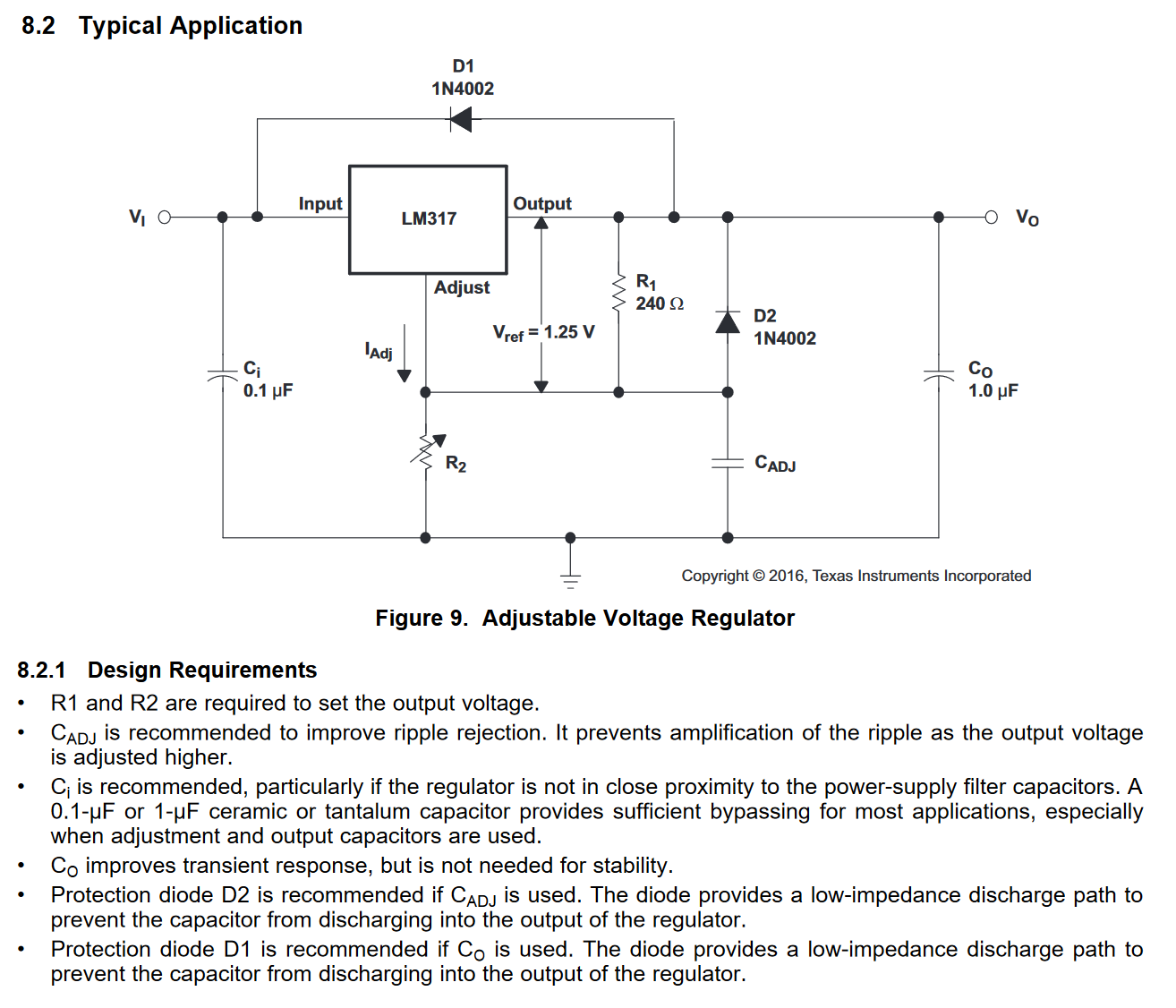Other Parts Discussed in Thread: LM317
I know many three-terminal regulators are subject to problems/failure if the input supply is shut off and the output side is still powered (either from an alternate source, or by large output capacitors).
Usually the cure is a diode from the output back to the input, anode to the output, cathode to the input of the regulator.
Is this necessary with the TLV760 family (5V or 3.3 variant)?
In my case, the output cap is 1uF, and the load is a very-low-power processor.
I may want to apply external power to the processor (ie, to the TLV760 voltage regulator output) without input power to the TLV760 for in-circuit programming of the processor chip, although if need be I could have test fixturing provide input power to the TLV760 in this situation.
I have very little space on board, so if I can get by without the extra diode, I'd be a happy camper.


